CES 2024: Rubber hits the road for the connected car
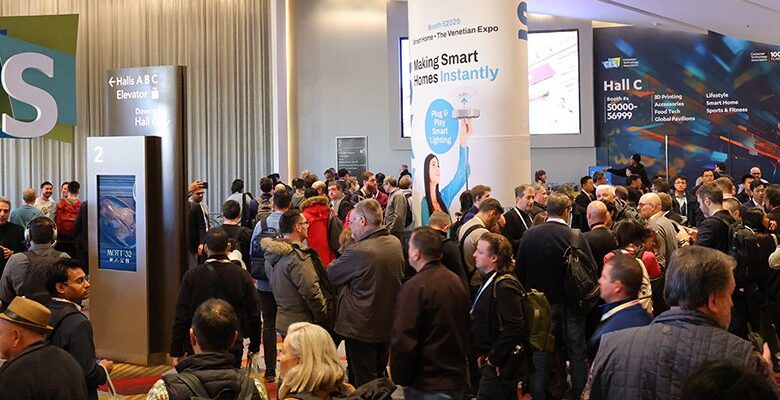
To aficionados, CES has always meant days of madness, with visitors to its home at the Las Vegas Convention Centre (LVCC) surrounded by a morass of newfangled consumer electronics. In the past, these have ranged from TVs measuring hundreds of inches and displays covering whole walls, to connected kettles, fridges and other kitchen appliances, to robotic vacuum cleaners and robots of varied forms. The internet of things (IoT) in its truest sense.
Yet at CES 2024, in what probably is the first true post-Covid show, there was a very apparent, and almost literal, new drive to the event. While all of the varied connected appliances and technologies were there in force as ever – with the leaders in TV and video, such as Sony, Panasonic and Hisense, showing off their latest ranges – the main attention hit the highway, with connected automotive use cases exemplifying the emergence of software-defined vehicles (SDVs) in what industry leaders are calling the new era of computing.
This point was made very strongly in one of the keynote addresses. Fox Business Network’s Liz Claman noted that she had been coming to CES for many a year and that she could remember the first time the industry arrived at the show in the middle of the last decade in the form of former Ford CEO Alan Mulally, the first auto executive of his status to be invited to speak there.
While making the case that in-vehicle connectivity is nothing new, Claman said CES 2024 showed just how far it had come in that time and that CES was now effectively the Detroit Auto Show – the flagship event for the industry as a whole – “on steroids”.
CES showed car manufacturers’ rapid increase in the electrification of their product lines, leading to a sharp increase in in-car electronics such as digital cockpits, advanced driver assistance systems (ADAS) and in-vehicle infotainment systems.
Claman was not alone in her take. Just before the doors opened on CES, analyst IDTechEx released a report forecasting a 35% compound annual growth rate (CAGR) in automotive software-related revenue by 2034, putting software-related revenue at more than $700bn annually.
The study, Connected and software-defined vehicles 2024-2034: markets, forecasts, technologies, noted that the most basic form of SDV is where the user experience is affected in some way by the software in a vehicle. It said that, generally, a software-defined vehicle requires a constant cellular connection (4G or 5G), a large, touch-enabled screen, and a powerful central compute system that is also connected to the vehicle’s constituent components. Many SDVs also incorporate third-party apps and in-vehicle payments to add more features and convenience to drivers.
Indeed, a visitor to the LVCC’s recently built West Hall would have been struck by just how many of the leading automotive manufacturers were showing off their range of connected vehicles. BMW was right by the front door, and not far away on the CES parking lot were connected vehicles from the likes of Mercedes, Jeep, John Deere and Hyundai, surrounded by IT and communications leaders whose products were making these vehicles smarter and equipped for the forthcoming days of vehicle-to-everything (V2X) networks that will almost certainly be the basis for future driving experiences.
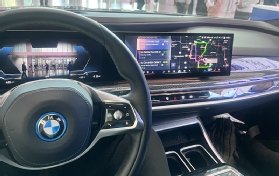
Cars and computers connect
Fox’s Claman was there to set the scene for this brave new connected world, interviewing Qualcomm CEO Cristiano Amon to show exactly how IT leaders were engaging with automotive as a key market. Amon suggested CES was now “a car show, among other things”, with vehicles being a new space for computing.
He added that Qualcomm was undergoing a fundamental shift in how it sees itself, from a wireless communications company to being a connected processor and artificial intelligence (AI) company. The overarching strategy for the company going forward is to tap into the growing world of AI in local devices.
“We have been very passionate about the role of AI in the devices we carry. We’ve been talking about on-device [AI for a long time] and our job was [to make] a computing engine that is going to make that technology run pervasively … The next form of computing, which is accelerated computing for AI, is going to happen everywhere. There’s fundamentally one thing that is different now. I look at [AI on devices] as the foundation of many of the things we’re doing with the Snapdragon digital cockpit and some of the rapid success we have had in automotive.”
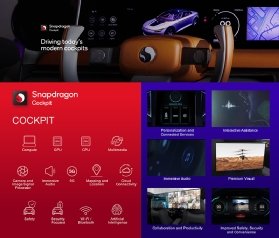
In aiming to realise Amon’s vision, Qualcomm used CES 2024 to launch a range of automotive products based on its Snapdragon Digital Chassis platform to support next-generation digital cockpits, connected car technologies, connected services, advanced driver assistance and automated driving systems. Within the Snapdragon roadmap, Qualcomm said automakers were being equipped to meet the increasing needs for higher levels of safety and intelligence powered by LTE, 5G, connected services, V2X, Wi-Fi, Bluetooth, satellite communications and precise positioning.
In addition to bringing AI forward within the automotive sphere, Qualcomm believes connectivity remains integral to the global industry’s digital transformation, powering what Amon calls an “unprecedented amount of innovation”. A key example is embedding the Salesforce CRM solution within the Snapdragon Cockpit and trialling financial solutions so that digital payments can be made from a car and associated with individual drivers.
In an example of where its automotive technology is being deployed, Qualcomm has signed a deal with Robert Bosch to introduce a central vehicle computer capable of running infotainment and advanced driver assistance system (ADAS) functionalities on a single system-on-chip (SoC). Bosch’s new central vehicle computer, known as the cockpit & ADAS integration platform, is based on the Snapdragon Ride Flex SoC. Together, the companies say they have successfully executed several in-vehicle infotainment projects and established a global customer base in this area.
The Bosch deal also highlights the fact that one of the key aspects of the connected vehicle marketplace is that is it dependent on a strong ecosystem, with partners from across the traditional automotive supply chain working in conjunction with the IT and comms industry.
Digital twins for faster development
Marelli is a mobility technology supplier to the automotive sector, whose stated mission is to transform the future of mobility through working with customers and partners to create a “safer, greener and better-connected world”.
Its key products include automotive lighting and sensing, electronics systems, electric powertrains, green technology solutions and interior experiences. The latter comprises cockpit module assemblies and modules to manufacturers, from steering members to cockpits and consoles. As SDVs, powertrain evolution, advanced connectivity and autonomy are rapidly reshaping the needs, designs and architectures of next-generation vehicles, Marelli says its approach will be based on co-creating the future of mobility with its customers, suppliers and leading technology partners.
The company used CES 2024 to show the IT and comms partnerships it had to offer to automotive manufacturers – not just the in-car products it could support, but also the connected services that such vehicles could take advantage of to produce digital cockpits and infotainment systems. Its key partners include Qualcomm, Amazon Web Services (AWS) and BlackBerry QNX.
The firm stresses that complexity within vehicles is getting higher and higher, and the key to accelerated development of new products and services is the cloud.
In a demonstration at CES 2024, the firm showed a number of its connected vehicle options with its partners, in particular showing off the benefits of creating a digital twin of the digital cockpit using a Qualcomm generation four chip, BlackBerry QNX Hypervisor, and a cluster and in-vehicle infotainment (IVI) applications running on top of that with a virtual version running on the cloud. The virtual setup comprised AWS cloud infrastructure, Qualcomm emulated hardware and QNX hypervisor.
Offering a reason for using a digital twin, Marelli notes that a traditional automotive production development programme is very linear: you start with hardware, then you do software, then integration. Typically, it takes about three years, which Marelli says is just no longer an acceptable development timeline. With a digital twin, manufacturers can decouple hardware development from software developers and start developing in the cloud on virtualised hardware. And when the hardware is ready, manufacturers can take the software, put it on the hardware and continue integration and testing.
Marelli estimates that this will reduce standard development timelines by up to 70% – from 36 months to 12-16 months – and reduce hardware costs by 30% because fewer physical hardware samples would be needed for development and testing. In the CES demo, Marelli created a digital twin for a zonal architecture, testing out the media player and other key functions within the cluster display.
The next big area of focus from a development perspective will be with microcontrollers, which still drive a lot of products in vehicles. A virtual product is expected at CES 2025.
Supporting car connectivity
Those of a certain age would have been hugely interested to see the return of BlackBerry to the comms market. Even after its meteoric fall after defining mobile business in the immediate post-millennial era, the company never went away. And while renaissance may not yet be the word to describe the company’s overall status in the comms industry, at CES it was most certainly back with interesting solutions.
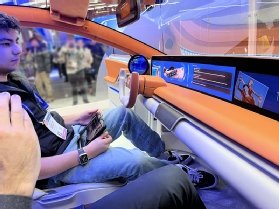
At the show, BlackBerry revealed the general availability of version 8.0 of its QNX Software Development Platform (SDP) which is designed to deliver a scalable, high-performance, real-time operating system for the current embedded computing industry, offering particular support for next-generation automotive and IoT systems. It also announced that it is working with AWS on the creation of a virtual cockpit platform for manufacturer Stellantis as part of its virtual engineering workbench, enabling the delivery of infotainment technology.
Another manufacturer BlackBerry is working with is Jeep, a user of its IVY mobility platform. Tarun Shome, product management director for BlackBerry IVY, revealed at CES 2024 that the company has been in the automotive industry for some time and currently provides secure access technology for over 235 million today.
Explaining BlackBerry IVY’s function, Shome reemphasised Qualcomm’s Amon’s point about the power of local devices. “It’s a middleware platform that allows us to take signals from the vehicle and create rich insights from the vehicle edge. So rather than actually processing in the cloud, sending loads of connected vehicle data, we have the ability to use the compute power that we have within the vehicle to then provide insights on signals,” he noted.
“We’ve developed it in conjunction with AWS, so as a partnership, and we then have some elements that allow us to control and configure everything from the code, and then to deploy software artefacts that run within our runtime on the vehicle to create these insights,” Shome added.
Shome sees specific opportunities arising from being able to create meaningful insights from data that is created from within the vehicle. BlackBerry is also looking to offer business efficiencies. Shome believes the BlackBerry technology can help reduce connectivity costs for connected vehicles by 70% of the connectivity costs due to processing in the vehicle, and that around 97% of compute costs can be taken away for some of the use cases.
In addition to AWS, BlackBerry is working with a range of ecosystem partners for its system to be implemented by the likes of Jeep. Shome revealed specific examples: “If you look at the partnerships we have, we have companies that are providing driver monitoring systems, we have companies that are providing tyre wear predictions, running IVI by taking information from the wheels. We have insurance-based use cases to where you typically have a telematics black box that you can replace with a software component. We have a company that’s looking at micro adjustments on your steering wheel and showing you [driver performance]. We have crash analysis by using the forward-facing cameras, and also sensors on the vehicle to detect crashes and create a report. We have facial recognition and offer [fleet managers] driver monitoring. What we want to do is to provide the tools to allow [manufacturers] to build out the use cases.”
Future thinking
While CES 2024 highlighted a whole host of technologies that could be implemented into automotive use cases, the one caveat is that the current infotainment innovations may not be hitting the road in commercially available vehicles for some time yet. Maybe not until 2028 or later. By this time, the industry will likely be seeing the first in a range of 6G connectivity services. So how far do technology firms need to be thinking ahead when it comes to connectivity?
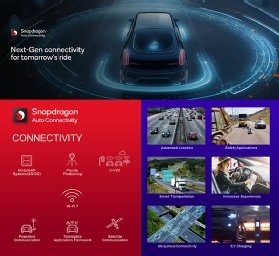
Enrico Salvatori, senior vice-president and president of Qualcomm Europe, noted that his company was very aware of the capabilities of the next generation of mobile, working with other players in the market to set “entry procedures” and set their specifications requirements. Yet he stressed there was plenty more that could be done in terms of 5G.
“[6G] is one effort ongoing, even though in the initial phase. There are still a lot of big R&D efforts in the development of 5G, so there is still a lot of work to be done on 5G for us, in particular in terms of implementing the modem, the chipset, the new performance. [In that], there is a gain. We think edge AI will see a huge effort in R&D driving the future and we are already there, but there will be more to come.
“Because this is automotive, you will see more and more SDV needs. You need to have a central compute platform with high performance. And then by software, you define the connected car – is it an entry-level or mid-range model? And with the software, we can do over-the-air updates. And because of 5G, it will drive the evolution of performance. With AI, everything is done by software, but we need to go to work on hardware to be ready to support the additional software performance requested in the future.”
And as CES 2024 showed, for “additional”, read “huge”. Past CES events have tended to leave visitors wondering whether what they saw will ever be commercialised. It’s doubtful this will be the case for what anyone saw at CES 2024 in the automotive space. The industry is plugged in for the future.




